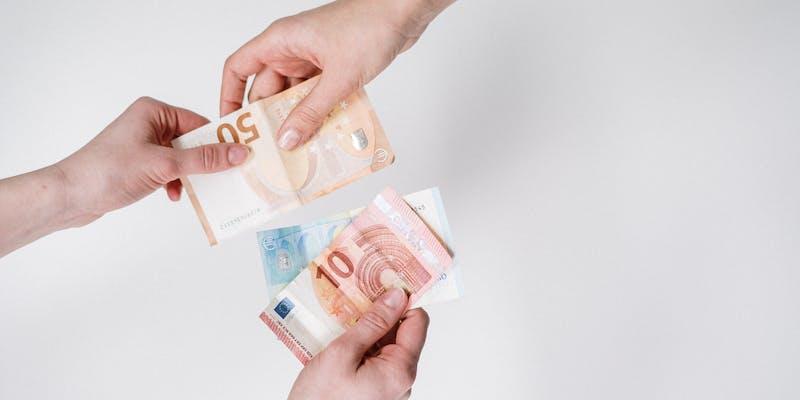Currency values are in constant flux, impacted by many economic and political factors. Understanding foreign exchange risk and adopting robust hedging strategies is critical for safeguarding investments from unpredictable currency movements.
The enormity of the global foreign exchange market is highlighted by its daily turnover, which reached an astounding $6.6 trillion in 2020. Given this scale, even small shifts in exchange rates can significantly impact financial outcomes. Investors and businesses must be vigilant in their foreign exchange risk analysis to understand potential exposures. This vigilance is crucial because a mere 1% fluctuation on such a significant daily turnover represents a substantial sum, emphasizing the importance of managing foreign exchange risk and
exposure.
Foreign Exchange Risk Explained

Foreign exchange risk, or the chance of losing money when currency values change, is a concern for anyone involved in international financial activities. This risk surfaces when businesses or investors deal with money beyond their home currency. For instance, if an American company pays for goods in euros, and the euro strengthens against the dollar, the cost for that company goes up. This can mean less profit or even a loss.
Considering the interconnected nature of global markets, the impact of such risks can be substantial. In 2019, U.S. companies reported that currency volatility impacted earnings by $23.39 billion, according to a report by Kyriba. This stark figure reveals the direct impact that foreign exchange movements have on financial outcomes.
To lessen this risk, hedging foreign exchange risk becomes a critical strategy. Companies and investors are at the mercy of the currency market's whims without hedging foreign exchange risk without hedging foreign exchange risk. Let’s first look at some of the risks involved in foreign exchange.
Transaction Risk
Transaction risk appears when there's a delay between when a deal is made and when it's settled. In this window, exchange rates can swing, meaning the final cost in your home currency might be more than you planned. This risk is all about timing. If you're a Canadian business buying goods from Europe, and the Canadian dollar weakens against the euro between the order and payment dates, your costs increase.
In 2021, for example, the euro to Canadian dollar exchange rate fluctuated by about 6% over the year. For a company trading large sums, a 6% cost increase can significantly affect profits.
To mitigate this, companies often hedge foreign exchange risk using forward contracts or options, ensuring they can predict their costs more accurately. Regular foreign exchange risk analysis is crucial to determine the right time and amount to hedge, maintaining a balance between protection and opportunity.
Translation Risk
Translation risk comes into play when a business operates internationally and must convert foreign earnings back to its main currency. If a UK-based company owns a branch in Japan, it needs to translate yen into pounds for its financial reports. If the yen weakens, the profits appear smaller when converted back to pounds.
For example, if the pound strengthens by 5% against the yen over a fiscal quarter, the reported earnings of the UK company from its Japanese subsidiary could be significantly lower after conversion. Companies must regularly perform a foreign exchange risk analysis to assess their financial statements' potential impact.
To manage this type of exposure, some may use hedging foreign exchange risk strategies like balance sheet hedges, which manage liabilities and assets in the foreign currency to offset potential translation losses. Practical foreign exchange risk analysis can help a firm decide how much foreign income to protect from currency fluctuations.
Economic Risk
Economic risk deals with the long-term effect of exchange rate shifts on a company's market value, influencing its competitive position and cash flows. This is about the broader market dynamics. A U.S. exporter competing with local European businesses could find its products becoming too expensive for Europeans if the dollar strengthens against the euro.
To provide a context, let's consider a period when the euro lost 10% against the dollar over a year. U.S. goods became relatively more expensive in Europe, potentially reducing demand and impacting the exporter's market share and value. Companies conduct foreign exchange risk analysis to forecast these trends and use hedging foreign exchange risk strategies, like adjusting their market strategies or entering into currency swaps, to mitigate economic risk.
It’s not just about immediate costs; it's also about understanding foreign exchange risk and exposure over the long term. A thorough foreign exchange risk analysis helps businesses to anticipate and prepare for potential market changes.
Hedging Against Foreign Exchange Risk

When dealing with the uncertainties of currency values, hedging serves as a strategic safeguard, much like an insurance plan against potential financial volatility. Businesses and investors have various financial tools to secure their assets against the unpredictable winds of foreign exchange markets.
Forward Contracts
These are promises to conduct a currency exchange at a predetermined rate on a specified future date. Regardless of the day-to-day swings in the exchange rates, a forward contract ensures that the agreed-upon rate is honored, providing a reliable shield against the risk of rate fluctuations.
Options
With options, investors can buy or sell a currency at a previously set rate but are not bound to proceed with the transaction. This strategic choice empowers them to act if the market moves in their favor while providing a safety net if the opposite occurs.
Currency Swaps
This instrument involves a mutual agreement to swap currencies at a specific exchange rate and then switch back at a later date. It’s a strategic move often used by companies dealing with loans in different money to take advantage of better interest rates or to reduce foreign exchange risk.
Examples
Consider an American electronics firm that needs to manage foreign exchange risk and exposure when buying parts from Japan. If the dollar drops against the yen, the cost to import these parts climbs, potentially eroding profits.
To mitigate this foreign exchange risk, the firm might use a forward contract to hedge against future currency risk. For instance, the firm could agree to purchase yen at a fixed rate of 1 USD to 110 JPY in six months.
No matter how the currencies move, the firm has a hedge against this foreign exchange risk. This example underlines the critical role of foreign exchange risk analysis and using hedging strategies to manage financial exposure effectively.



